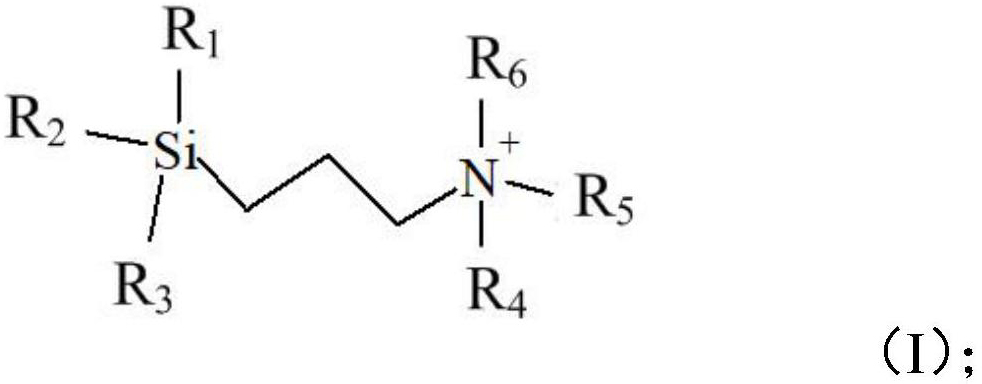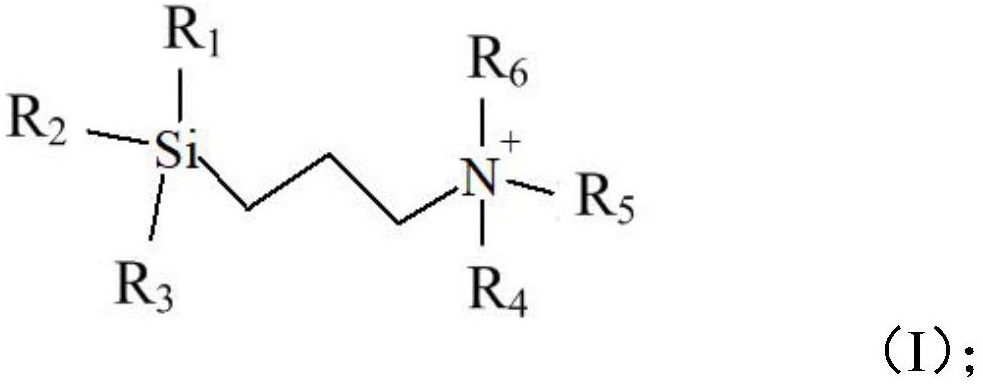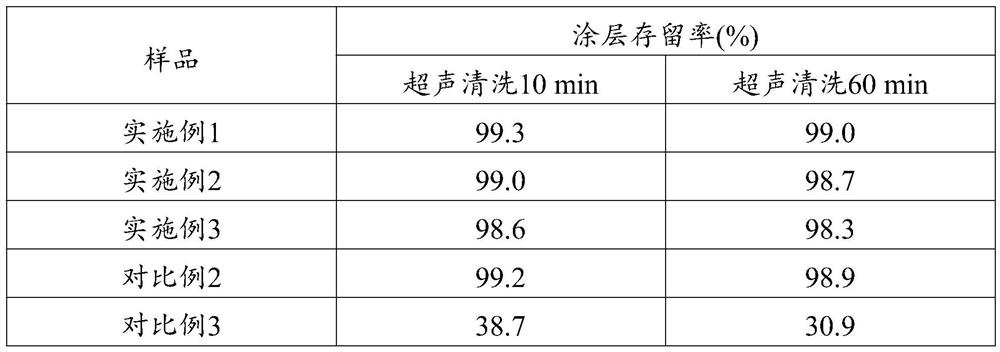A kind of surface anticoagulant modification method of polymer material
A polymer material and anti-coagulation technology, applied in the direction of heparin coating, alginic acid coating, coating, etc., can solve the problems of general anti-coagulation effect, limited surface amount of heparin sodium, low grafting rate of heparin sodium, etc. Achieve the effects of avoiding unsustainable anticoagulant effect, promoting anticoagulant effect, and simple and easy preparation method
- Summary
- Abstract
- Description
- Claims
- Application Information
AI Technical Summary
Problems solved by technology
Method used
Image
Examples
Embodiment 1
[0072] Preparation of sodium alginate and organosilicon quaternary ammonium salt charge complex: prepare respectively a concentration of 4wt% sodium alginate aqueous solution (the number average molecular weight of sodium alginate is 80000) and a concentration of 4wt% trimethyl[3-(trimethyl Oxysilyl)propyl]ammonium chloride aqueous solution, sodium alginate and trimethyl[3-(trimethoxysilyl)propyl]ammonium chloride are mixed at room temperature according to the mass ratio of 2:1, and an insoluble Precipitated in water, centrifuged, washed 3 times with water and dried to obtain charge complex of sodium alginate and trimethyl[3-(trimethoxysilyl)propyl]ammonium chloride.
[0073] Soak the poly(4-methyl-1-pentene) hollow fiber membrane in deionized water for 24 hours, dry it in a vacuum drying oven, put the dried hollow fiber membrane into the chamber of the plasma processor and fix it. Vacuum to 1Pa, pass through oxygen for surface activation. The air pressure in the cavity is 35...
Embodiment 2
[0077]Preparation of sodium alginate and organosilicon quaternary ammonium salt charge complex: prepare respectively a concentration of 1.5wt% sodium alginate aqueous solution (the number average molecular weight of sodium alginate is 10000) and a concentration of 1.5wt% dimethyltetradecane Base[3-(triethoxysilyl)propyl]ammonium chloride aqueous solution, sodium alginate and dimethyltetradecyl[3-(triethoxysilyl)propyl]ammonium chloride according to Mix at room temperature with a mass ratio of 1:1 to rapidly form a water-insoluble precipitate. After centrifugation, wash with water three times and dry to obtain sodium alginate and dimethyltetradecyl[3-(triethoxysilane base) propyl] ammonium chloride charge complex.
[0078] Soak the poly(4-methyl-1-pentene) hollow fiber membrane in deionized water for 24 hours, dry it in a vacuum drying oven, put the dried hollow fiber membrane into the chamber of the plasma processor and fix it. Vacuum to 1Pa, pass through oxygen for surface a...
Embodiment 3
[0082] Preparation of sodium alginate and organosilicon quaternary ammonium salt charge complex: prepare respectively a concentration of 2.5wt% sodium alginate aqueous solution (the number average molecular weight of sodium alginate is 30000) and a concentration of 2.5wt% dimethyl octadecane Base[3-(trimethoxysilyl)propyl]ammonium chloride aqueous solution, sodium alginate and dimethyloctadecyl[3-(trimethoxysilyl)propyl]ammonium chloride according to mass ratio Mix at room temperature at a ratio of 1:2, rapidly form a water-insoluble precipitate, centrifuge, wash 3 times with water and dry to obtain sodium alginate and dimethyloctadecyl[3-(trimethoxysilyl)propane base] ammonium chloride charge complex.
[0083] Soak the poly(4-methyl-1-pentene) hollow fiber membrane in deionized water for 24 hours, dry it in a vacuum drying oven, put the dried hollow fiber membrane into the chamber of the plasma processor and fix it. Vacuum to 1Pa, pass through oxygen for surface activation. ...
PUM
 Login to View More
Login to View More Abstract
Description
Claims
Application Information
 Login to View More
Login to View More - R&D
- Intellectual Property
- Life Sciences
- Materials
- Tech Scout
- Unparalleled Data Quality
- Higher Quality Content
- 60% Fewer Hallucinations
Browse by: Latest US Patents, China's latest patents, Technical Efficacy Thesaurus, Application Domain, Technology Topic, Popular Technical Reports.
© 2025 PatSnap. All rights reserved.Legal|Privacy policy|Modern Slavery Act Transparency Statement|Sitemap|About US| Contact US: help@patsnap.com



